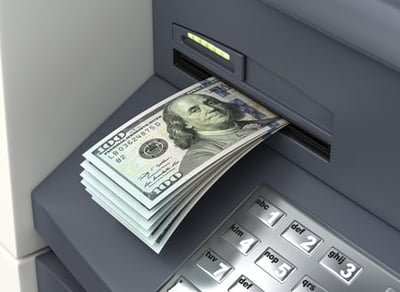 How can you save millions a year and increase your production uptime? Having a handle on the total cost of ownership for your forklift power system can show you the areas where you may not even realize you’re bleeding money.
How can you save millions a year and increase your production uptime? Having a handle on the total cost of ownership for your forklift power system can show you the areas where you may not even realize you’re bleeding money.
An important step is fully understanding the total cost of ownership of your current operation. In our experience, many companies confuse the initial cost of a purchase for batteries and chargers with the total cost of ownership.
So, what’s the difference? The initial cost is simply the purchase price, while the total cost of ownership is the purchase price plus any costs to maintain that asset as well as any costs that are eliminated (added) due to putting in a superior (or inferior) solution.Typically, we see the acquisition price equating to less than 30% of the total cost of ownership for a 2-3 shift operation.
Unfortunately, when many companies craft their power solutions, the finance department often pays attention to only the purchase price. This purchase approach can cost far more in the long run. Why?
Companies that look solely at the purchase price not only tend to underestimate the cost of a forklift power strategy, they also make choices which result in lowered productivity. In addition, equipment acquisition cost is less than 50% of the total cost of equipment. Not to mention you may end up buying MORE equipment than you actually need when focusing on acquisition price.
You can see why total cost of ownership is an important concept to understand. It can be complicated because a power system and strategy often has many different pieces.
Here are some costs that you’ll want to consider in order to calculate your total cost of ownership:
1. Purchase price of Forklifts and Batteries - This tends to be pretty straightforward. The struggle here is ensuring you are comparing apples to apples. Every steel frame or lead acid battery is not created alike.
2. Maintenance - This can be a big addition to the total cost of ownership and can cost the same amount as the acquisition price of a forklift asset and 50-100% of the cost of a battery depending on how long the asset is utilized and how well it is maintained.
3. Asset Life - Now, we bet if you ask someone about the average lifespan of batteries at your company, they’ll say it’s five years—and an ideally maintained battery should last five years in most applications. Too much or too little equipment can heavily affect this. Poor maintenance practices can cut a battery life in half.
4. Battery Rooms – These costs include the equipment price, the maintenance costs, the costs of downtime, and the costs of labor/productivity loss to swap batteries. Not to mention the costs to have the right technology/FIFO system in place to pull the right batteries at the right time and ensure equalizations. Did we mention the costs involved in taking up valuable facility space? And is your team taking into account safety risk costs of a battery room?
5. Cost of battery charging – The efficiency of charging, the cost of over-charging, the cost of electricity, etc., can really add up in old or poorly designed forklift power systems. This is a place that is often overlooked.
6. Cost of downtime – Loss of productivity can be calculated for the loss of a worker and their forklift, or it can be considered the bottleneck that halts production across a facility. Depending on your application(s) and velocity of production/shipping, this can cost can outweigh numbers 1-5!
Since there are so many moving parts and “hidden” costs, it can be challenging to accurately assess the different pieces that go into your company’s total cost of ownership for power.
What’s the best way to get a sense of the big picture?
A Power Assessment can help.
Do you understand exactly what your power needs are? Many companies do not. They’ve built their power strategy as an afterthought to their forklift strategy. When you think about it that way, the issues are quickly apparent. Power is almost half the cost of the forklift over the life of ownership, so it should be considered as an important part of the total plan.
A power study quantifies your company’s power needs in a measurable way. It’s an important first step to understanding the total cost of ownership of each forklift. It also ensures that you can accurately assess the type of battery that works best for your needs.
A power assessment usually takes about a month for us, but very little of your team’s time. It can be conducted internally if you have the resources or outsourced to experts. It’s a smart first step toward finding the true total cost of ownership of your power strategy.


 Ryan Lynch
Ryan Lynch